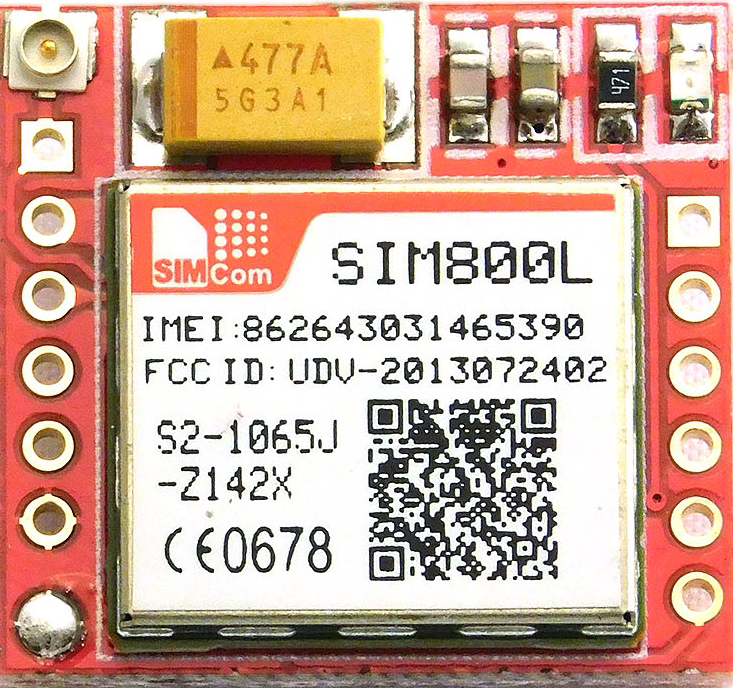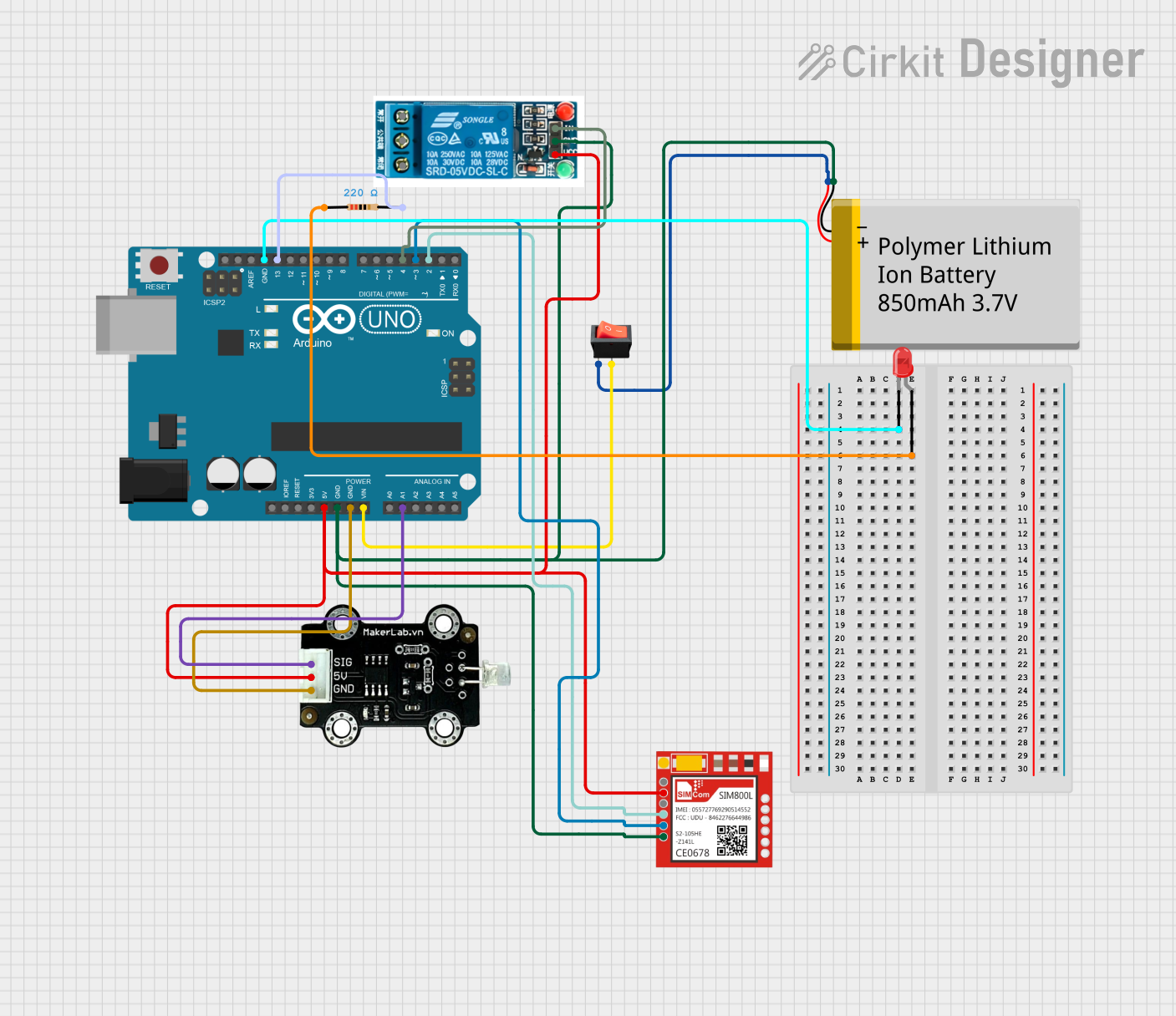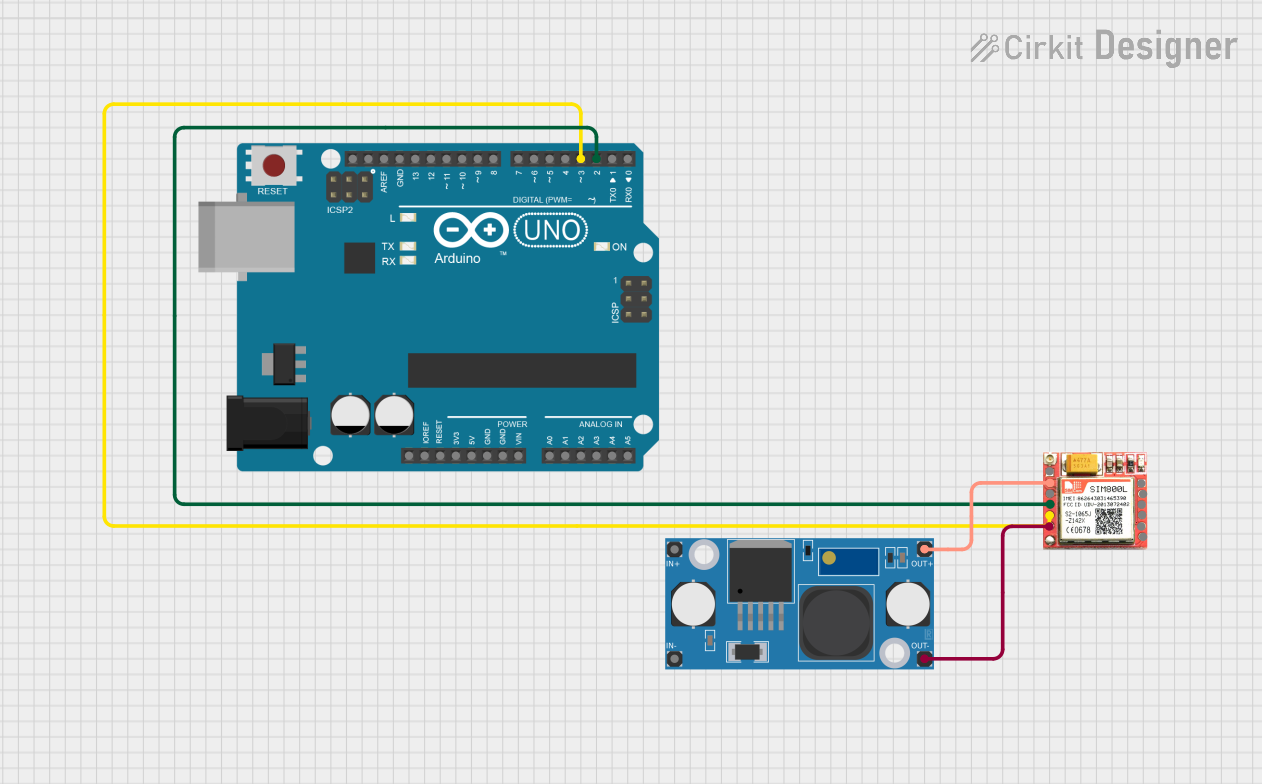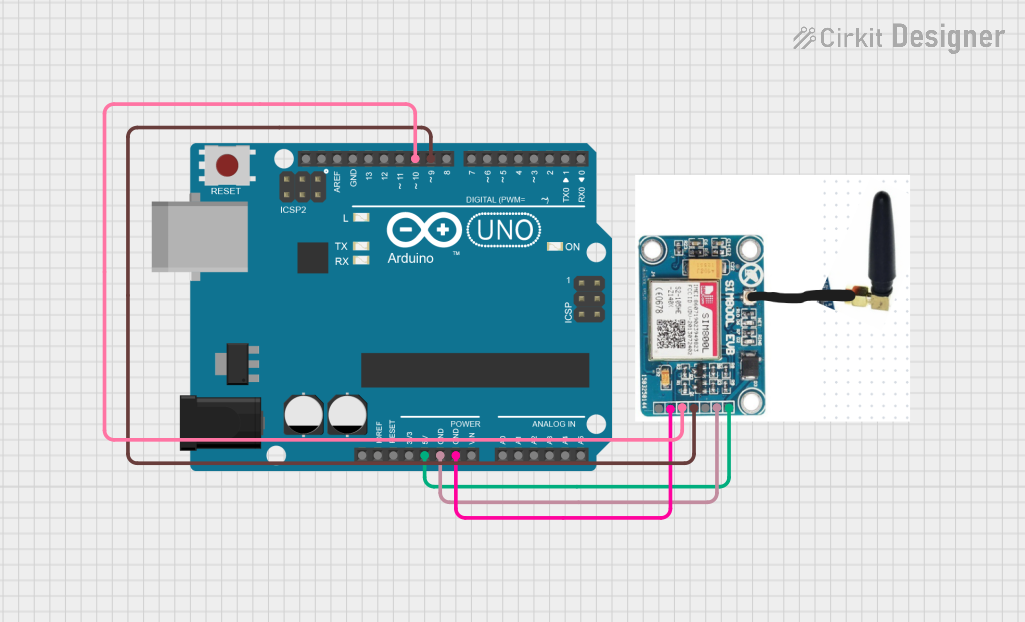
How to Use sim 800l: Examples, Pinouts, and Specs

 Design with sim 800l in Cirkit Designer
Design with sim 800l in Cirkit DesignerIntroduction
The SIM800L is a compact and versatile GSM/GPRS module that allows embedded systems to communicate over cellular networks. It is capable of sending SMS messages, making voice calls, connecting to the internet via GPRS, and even supporting Bluetooth communication. This module is widely used in IoT projects, remote monitoring systems, and mobile communication applications.
Explore Projects Built with sim 800l

 Open Project in Cirkit Designer
Open Project in Cirkit Designer
 Open Project in Cirkit Designer
Open Project in Cirkit Designer
 Open Project in Cirkit Designer
Open Project in Cirkit Designer
 Open Project in Cirkit Designer
Open Project in Cirkit DesignerExplore Projects Built with sim 800l

 Open Project in Cirkit Designer
Open Project in Cirkit Designer
 Open Project in Cirkit Designer
Open Project in Cirkit Designer
 Open Project in Cirkit Designer
Open Project in Cirkit Designer
 Open Project in Cirkit Designer
Open Project in Cirkit DesignerCommon Applications and Use Cases
- Remote data logging and telemetry
- SMS-based remote control
- Vehicle tracking systems
- Home automation and security systems
- Wearable devices with communication capabilities
Technical Specifications
Key Technical Details
- Frequency Bands: Quad-band 850/900/1800/1900MHz
- Supply Voltage: 3.4V to 4.4V (Typical 4.0V)
- Operating Current: Approx. 2A during transmission, 1mA in sleep mode
- Temperature Range: -40°C to +85°C
- Sensitivity: -109dBm
Pin Configuration and Descriptions
| Pin Number | Pin Name | Description |
|---|---|---|
| 1 | VCC | Power supply (3.4V to 4.4V) |
| 2 | RST | Reset pin (active low) |
| 3 | RXD | Serial data receive pin |
| 4 | TXD | Serial data transmit pin |
| 5 | GND | Ground connection |
Usage Instructions
How to Use the Component in a Circuit
Power Supply: Connect a stable power source capable of delivering up to 2A to the VCC and GND pins. A voltage regulator may be necessary to ensure the voltage remains within the specified range.
Serial Communication: Connect the RXD and TXD pins to the corresponding TX and RX pins of your microcontroller (e.g., Arduino UNO). Remember to cross-connect RX to TX and TX to RX.
Antenna: Attach the supplied GSM antenna to the antenna connector on the module.
SIM Card: Insert a micro SIM card into the SIM card holder.
Important Considerations and Best Practices
- Ensure that the power supply can handle the peak current requirements during transmission.
- Use a level shifter if the microcontroller operates at a different logic level than the SIM800L.
- Place the module away from noise sources and ensure the antenna has a clear view of the sky for better signal reception.
- Follow ESD precautions when handling the module to prevent damage.
Example Code for Arduino UNO
#include <SoftwareSerial.h>
SoftwareSerial sim800l(7, 8); // RX, TX
void setup() {
// Begin serial communication with Arduino and SIM800L
sim800l.begin(9600);
Serial.begin(9600);
// Set SIM800L to fixed baud rate (optional)
sim800l.println("AT+IPR=9600");
delay(1000);
// Check communication with SIM800L
sim800l.println("AT");
delay(1000);
updateSerial();
}
void loop() {
updateSerial();
}
void updateSerial() {
// Forward every message from SIM800L to the Arduino Serial Monitor
while (sim800l.available()) {
Serial.write(sim800l.read());
}
// Forward every message from the Serial Monitor to SIM800L
while (Serial.available()) {
sim800l.write(Serial.read());
}
}
Troubleshooting and FAQs
Common Issues Users Might Face
- Power Issues: The module may restart or not work if the power supply is insufficient.
- Signal Strength: Poor signal strength can lead to communication failure.
- SIM Card Issues: Ensure the SIM card is activated and has no PIN code set.
Solutions and Tips for Troubleshooting
- Power Supply: Use a high-quality power source and check connections.
- Antenna Placement: Relocate the antenna or module to improve signal reception.
- SIM Card: Check the SIM card on a phone to ensure it's working.
FAQs
Q: Can I use the SIM800L with a 5V microcontroller? A: Yes, but you will need a level shifter for the RX and TX pins.
Q: How do I know if the SIM800L is connected to the network?
A: Send the command AT+CREG? and check for a response indicating registration.
Q: What is the default baud rate of the SIM800L? A: The default baud rate is auto-bauding, but it can be set to a fixed rate using AT commands.
Remember to always consult the SIM800L datasheet for the most accurate and detailed information.